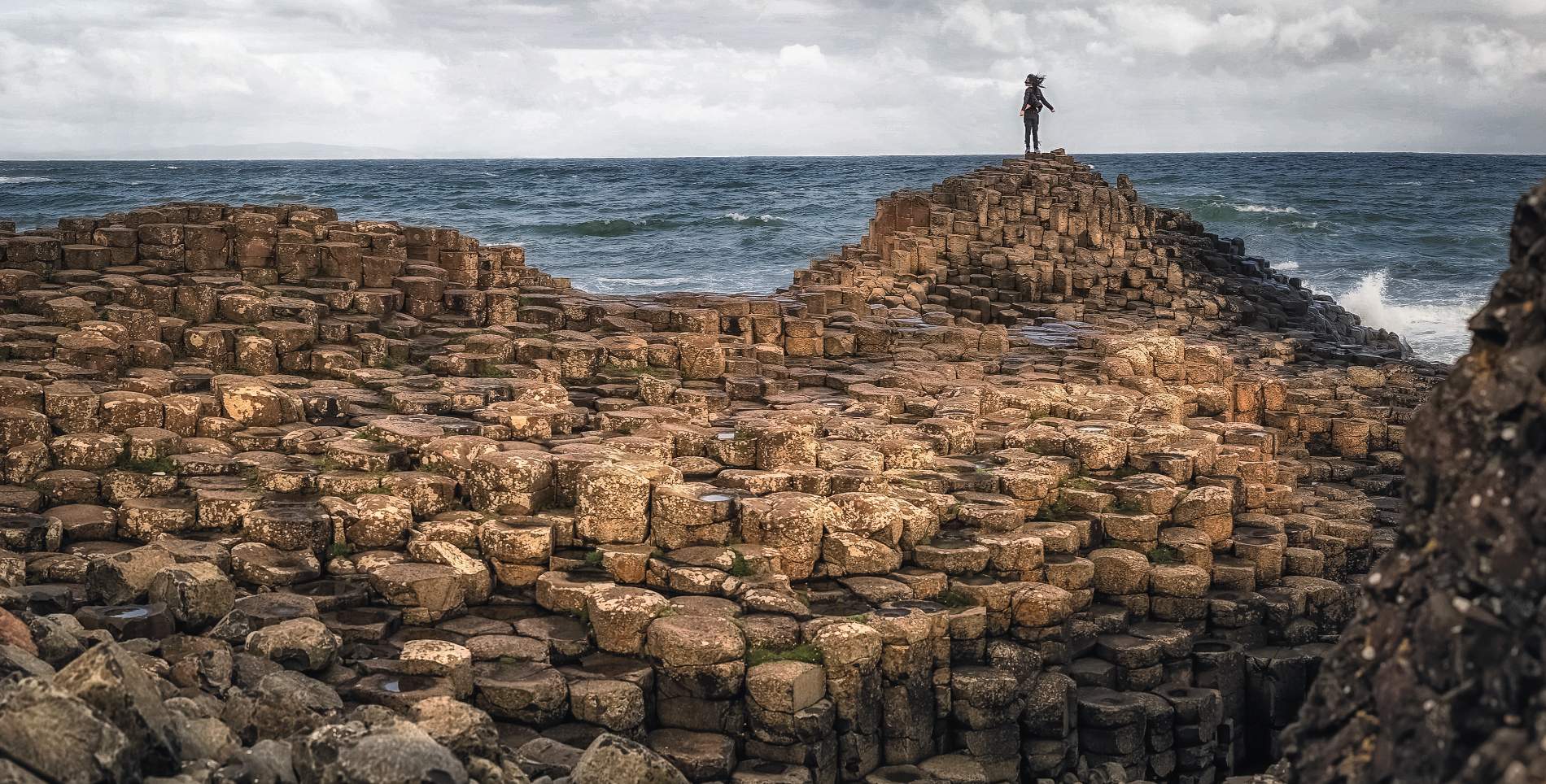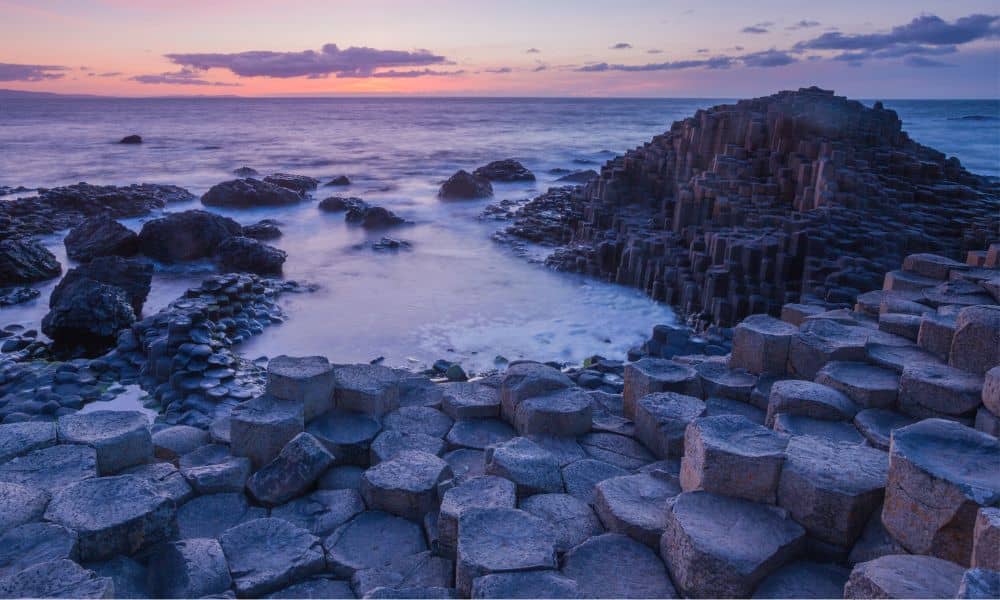Giant’s Causeway, located on the northeastern coast of Northern Ireland, is a spectacular natural formation renowned for its unique hexagonal basalt columns. Designated as a UNESCO World Heritage Site in 1986, this geological wonder attracts hundreds of thousands of visitors annually. This article delves into the geological formation, myths and legends, ecological significance, and tourism aspects of the Giant’s Causeway. Through effective use of transitional phrases, we will explore the various facets of this incredible site.
Geological Formation of the Giant’s Causeway
First and foremost, understanding the geological formation of the Giant’s Causeway is essential. Approximately 60 million years ago, during the Paleogene Period, intense volcanic activity in the region led to the formation of these unique columns. As lava rapidly cooled and contracted, it cracked into the distinct hexagonal shapes we see today. Consequently, over 40,000 interlocking basalt columns emerged, creating the iconic landscape. Therefore, the Giant’s Causeway is not only a testament to the Earth’s dynamic geological processes but also a stunning example of natural symmetry.
Myths and Legends Surrounding the Giant’s Causeway
In addition to its geological significance, the Giant’s Causeway is steeped in myths and legends. One of the most famous tales involves the giant Finn McCool (Fionn mac Cumhaill). According to legend, Finn built the causeway fiatogel to challenge a Scottish giant, Benandonner, to a fight. However, when Finn saw the immense size of Benandonner, he retreated home. His clever wife, Oonagh, disguised Finn as a baby. When Benandonner saw the enormous “baby,” he assumed that Finn must be even larger and fled back to Scotland, destroying the causeway behind him. Consequently, this myth adds a layer of cultural richness to the site, enhancing its allure.

The Ecological Significance of the Giant’s Causeway
Moreover, the Giant’s Causeway holds significant ecological importance. The site supports a diverse range of flora and fauna, many of which are unique to this coastal environment. For example, the rocky shores and tidal pools provide habitat for numerous marine species, including barnacles, limpets, and periwinkles. Additionally, the surrounding grasslands and cliffs host various bird species such as fulmars, guillemots, and razorbills. Therefore, the Giant’s Causeway is not only a geological marvel but also a vital ecological habitat.
Tourism and Visitor Experience
Tourism is a major aspect of the Giant’s Causeway, contributing significantly to the local economy. The site’s visitor center, which opened in 2012, offers interactive exhibits and educational resources about the causeway’s formation, history, and ecology. Visitors can take guided tours or explore the site independently, enjoying the breathtaking views and unique geological formations. Additionally, the Causeway Coast offers numerous walking trails, providing opportunities for scenic hikes and exploration. Thus, the Giant’s Causeway offers a comprehensive visitor experience that combines natural beauty with educational enrichment.
Conservation Efforts
However, with the influx of tourists, conservation efforts are crucial to preserving the Giant’s Causeway. The National Trust manages the site, implementing measures to protect the fragile ecosystem and geological structures. These efforts include maintaining designated pathways to minimize erosion, monitoring wildlife populations, and promoting sustainable tourism practices. By balancing accessibility with conservation, the National Trust ensures that future generations can continue to enjoy this natural wonder.

The Geological Impact on Research
Furthermore, the Giant’s Causeway plays a pivotal role in geological research. Scientists study the site’s unique formations to gain insights into volcanic activity and the Earth’s geological history. The precise hexagonal shapes of the basalt columns provide valuable information about the cooling and contraction processes of lava. Moreover, the site serves as an outdoor laboratory for students and researchers, fostering a deeper understanding of geological phenomena. Consequently, the Giant’s Causeway significantly contributes to the advancement of geological science.
Cultural Significance
The cultural significance of the Giant’s Causeway extends beyond myths and legends. The site has inspired artists, writers, and musicians for centuries. Its dramatic landscape features prominently in Irish folklore, literature, and art. For instance, poet Seamus Heaney referenced the Giant’s Causeway in his works, capturing its essence and cultural impact. Furthermore, the site’s unique beauty continues to attract filmmakers and photographers, cementing its place in popular culture. Therefore, the Giant’s Causeway is not only a natural wonder but also a cultural icon.
Accessibility and Travel Tips
For those planning to visit the Giant’s Causeway, accessibility is a key consideration. The site is well-connected by road and public transport, making it easily accessible from major cities like Belfast and Dublin. Additionally, the visitor center offers facilities such as parking, restrooms, and a café, ensuring a comfortable experience for all visitors. It is advisable to wear sturdy footwear and weather-appropriate clothing, as the coastal climate can be unpredictable. Furthermore, booking guided tours in advance can enhance the visitor experience, providing deeper insights into the site’s history and geology.

Future Prospects
Looking ahead, the future prospects of the Giant’s Causeway depend on continued conservation efforts and sustainable tourism practices. The National Trust and local authorities are committed to preserving the site’s integrity while enhancing visitor facilities and educational resources. Innovations in digital technology, such as virtual reality tours and interactive exhibits, can further enrich the visitor experience. Moreover, ongoing research and collaboration with international conservation organizations will ensure the site’s ecological and geological significance is maintained. Thus, the future of the Giant’s Causeway looks promising, with a balanced approach to preservation and public engagement.
Rapid Response: A Critical Component of Emergency Management



